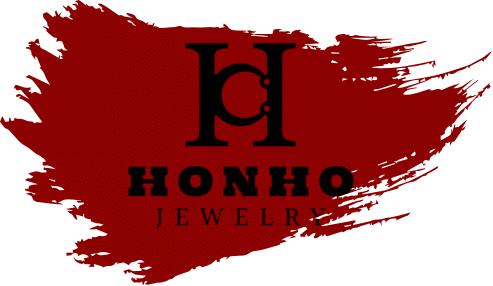How Much Is a 14K Gold Ring Worth: Factors That Affect Its Value
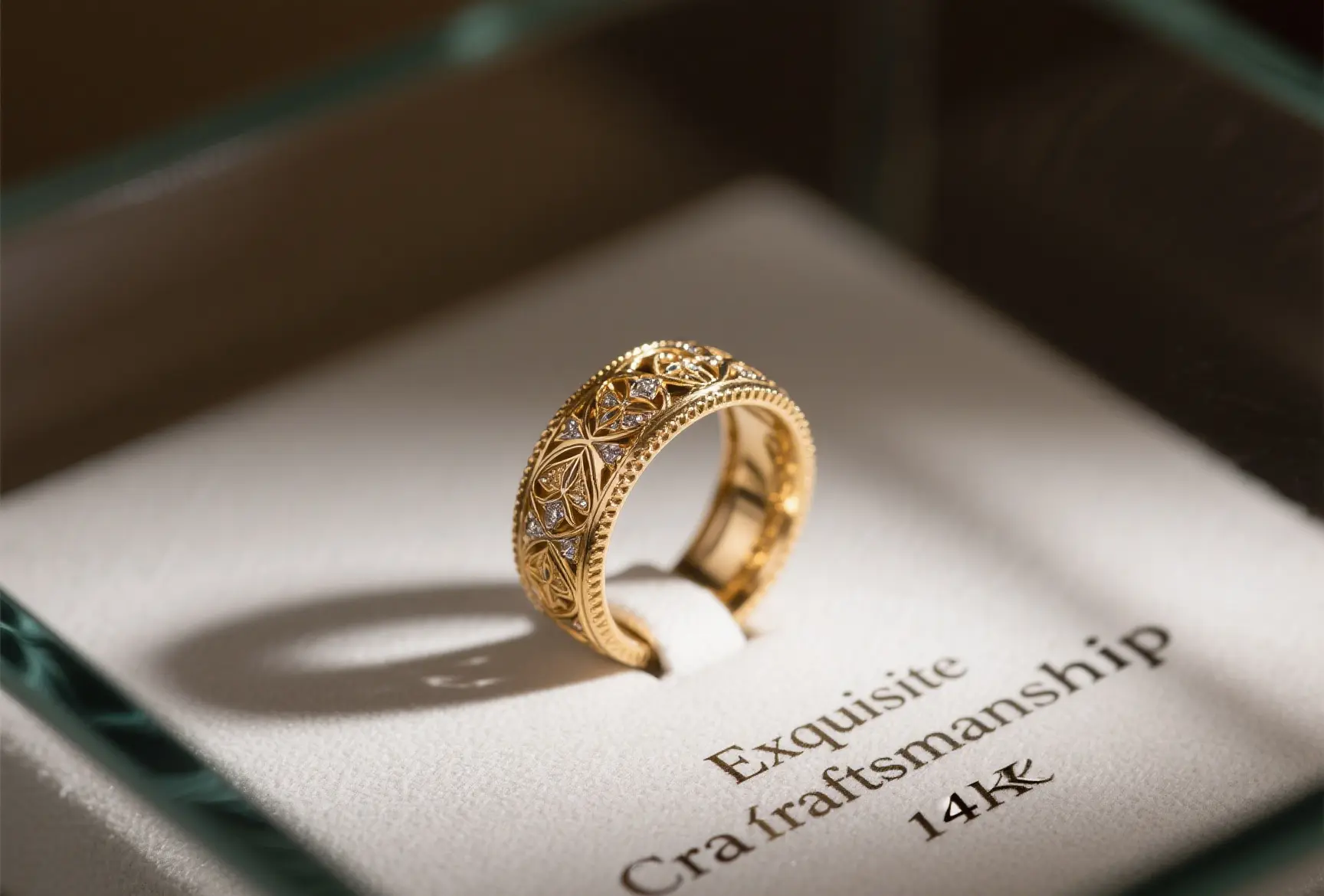
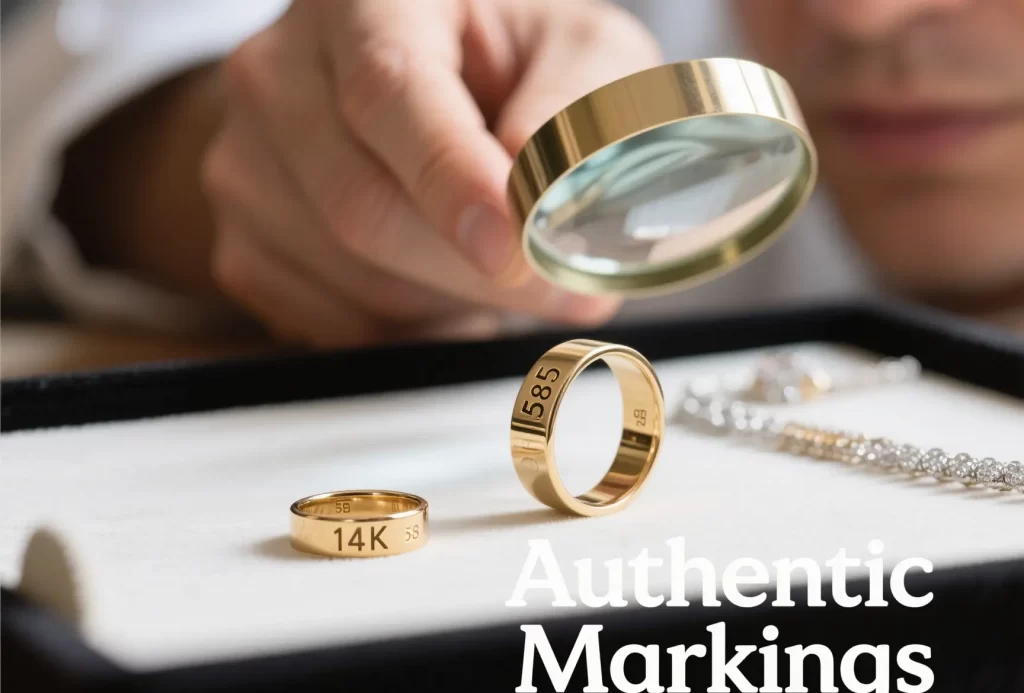
Key Takeaways
- 14K gold is 58.3% pure gold, so it’s a durable, affordable gold for jewelry in the United States.
- The true value of a 14k gold ring depends on three main factors. These factors include its weight, gold prices, craftsmanship, condition, and if it contains gemstones or designer branding.
- Look for any real 14K stamps or engravings first. With a jewelry scale and today’s gold prices, you can quickly figure out your ring’s value!
- Market trends and economic conditions can influence how much you can get when buying or selling a 14K gold ring.
- Things like vintage status or engravings can produce sentimental and collectible components. These factors can improve sentimental or resale value, in addition to the value of the gold alone.
- When selling, seek a professional appraisal, compare offers, and be aware of scams to ensure you get the best possible price.
The value of a 14k gold ring in the U.S. Is simply based on what the gold price is right now. It further considers the ring’s weight and style/design/brand. Fourteen karat gold simply means the ring is made up of approximately 58% pure gold. The balance is made up of other metals, typically copper or silver.
Gold prices fluctuate on a daily basis and one troy ounce is equal to approximately 31.1 grams. The average 14k gold ring weighs anywhere from 2 to 7 grams. Designer brands or rings with precious stones can easily triple that price.
Jewelry stores, pawn shops, and online buyers pay the best prices, so it depends on local market trends. If you want to know how much a 14k gold ring is worth, the first step is to look up the current gold price. Finally, measure your ring’s weight!
What Exactly Is 14K Gold?
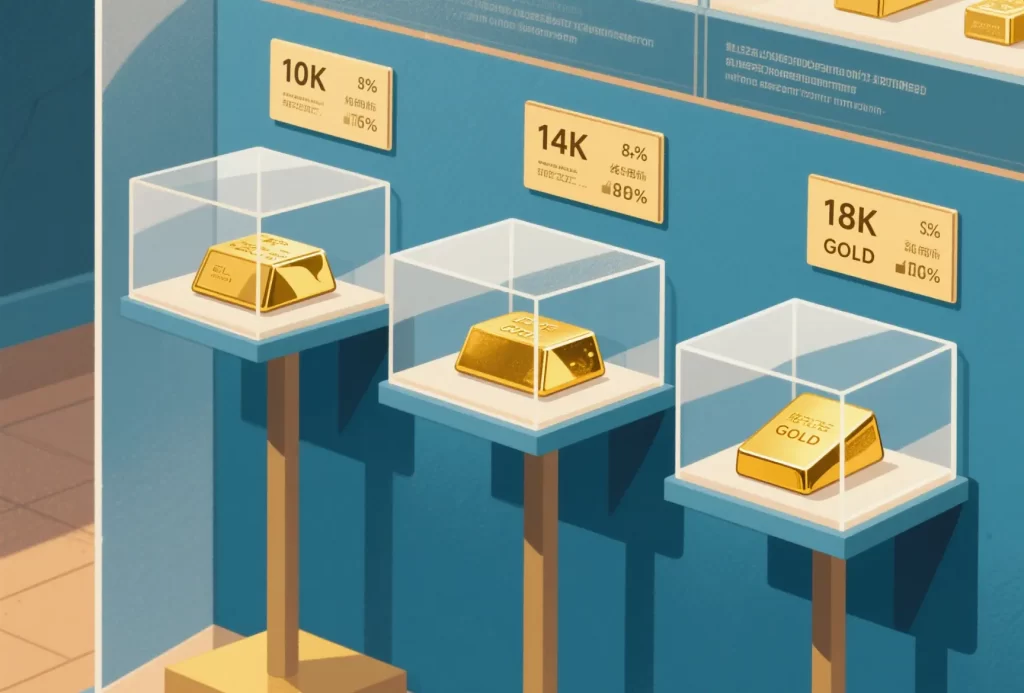
In the jewelry market within the U.S., 14K gold remains a favorite selection for rings and other types of jewelry. Metropolitan areas like Los Angeles mix form and function, further enhancing its popularity. This highly popular gold type is 58.3% pure gold by weight.
The rest of the composition consists of other metals (copper, silver, or zinc). As a result, these other metals increase 14K gold’s durability while providing opportunities to manipulate its appearance. It’s this combination that makes 14K gold both durable enough for everyday use and retains the warm golden hue that so many covet.
The 58.3% Gold Standard
The most important thing to understand about 14K gold is that its 58.3% pure gold content is what matters in terms of value and cost. It’s more affordable than 18K gold, which is made of 75% gold. The tradeoff is worth it, still providing a solid quality-value ratio.
This combination of durability and affordability makes it a popular choice among people who want the beauty of real gold without the expense of higher karats. Beyond fashion, the gold content plays a significant role in determining market value. Often the 14K gold jewelry you see is stamped “14K” or “585,” indicating its purity.
Some manufacturers will use a “585” stamp as their alloy may be slightly purer than the base standard.
Why Alloys Make Gold Stronger
That’s because pure gold bends and scratches at the drop of a hat. To counter this softness, jewelers combine gold with copper or silver to create something much harder and longer-lasting. These alloys allow jewelers to create other colors, such as rose or white gold.
More durable gold alloys make for harder-working rings that survive the daily bumps and bruises of life.
Popular 14K Gold Colors Explained
You’ll most commonly see 14K gold in yellow, white, and rose. The specific combination of other metals used determines the gold color—more copper will produce rose gold, while more silver or nickel will produce white gold.
Whether for fashion or custom, consumer preferences go on to influence future trends in the marketplace.
Spotting Genuine 14K Markings
Real 14K gold rings have markings like “14K” or “585.” These markings indicate the purity of the gold. Other pieces of jewelry, such as gold-plated items, can have these same markings but aren’t all gold.
By understanding these standards, consumers can better protect themselves from an unaffordable mistake. At HonHo Jewelry Manufacturer, located in Yiwu, China, we always receive clear gold-filled and custom markings to build customer trust.
Key Factors: Your Ring’s True Worth
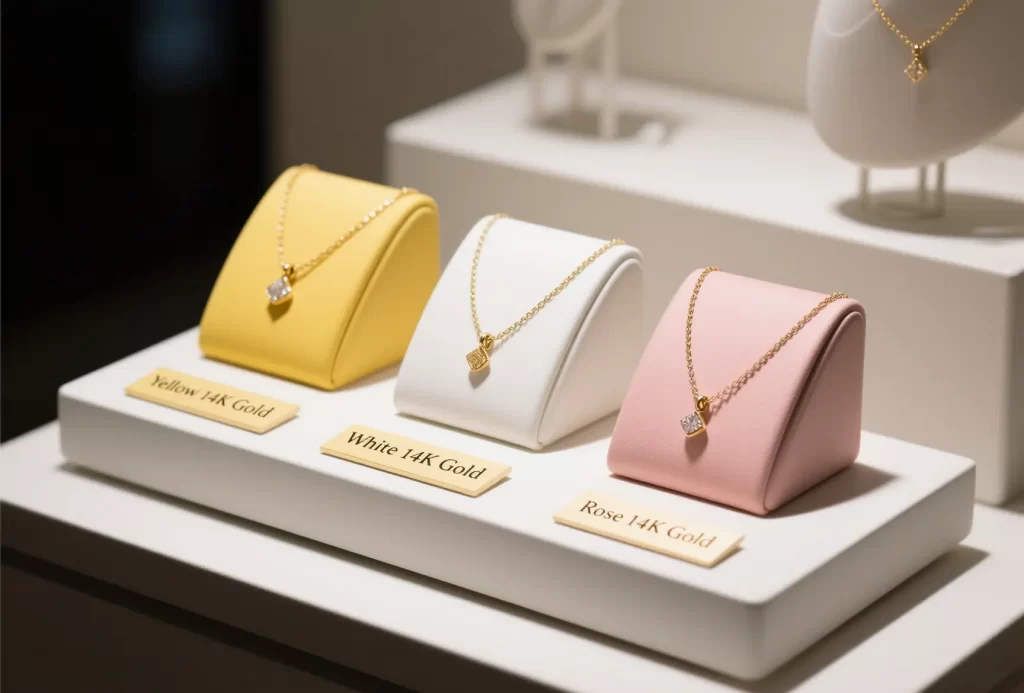
Determining the true value of a 14k gold ring involves considering factors beyond just the gold purity levels. The actual value of your ring is determined by a combination of its physical characteristics, current market price trends, and personal significance. Each one of the key factors listed below impacts your ring’s true value in today’s jewelry industry, affecting its meaning in your life.
1. Gold Weight: The Foundation of Value
The foundation for any gold ring valuation begins with weight. The value of gold is based on weight, usually calculated in grams or troy ounces. A heavier ring will always bring in more money, all else being equal.
You can determine the value of the gold alone by multiplying the gold weight by today’s gold price. Next, multiply that value by purity to account for lack of pure gold. In this case, a 7-gram 14k gold ring would have about 4.08 grams of pure gold. That’s due to the fact that 14k gold is 58.3% pure.
The importance of using a jewelry scale is crucial. Ideally, you’ll use a small, high-value jewelry scale. Even basic kitchen scales will be off by several tenths of a gram. A small difference in gold weight can result in price differences of many dollars!
Jewelers and gold buyers use digital scales that measure to the 0.01 gram, so precision is key. If you’re estimating your ring’s value from home, purchasing a quality jewelry scale is a must. That’s how it protects you from getting ripped off!
2. Purity Check: The Karat’s Role
Karat is a metric used to determine the gold purity of gold. In the US, 14k gold is a prevalent standard in jewelry, containing 58.3% pure gold mixed with an alloy of other metals such as copper or silver, enhancing durability. For comparison, 18k gold boasts a higher purity level of 75%, while 10k gold only has 41.7% purity. Generally, the higher the karat, the richer the gold hue and the greater its intrinsic value, although this often results in reduced durability.
Most of our customers prefer 14k, as it strikes a balance between strength and aesthetic appeal. When evaluating rings side-by-side or during an appraisal, check for a “14k” or “585” mark inside the band. This mark not only signifies the amount of gold but also offers assurance regarding the quality and overall value of the piece.
The current market price of gold jewelry is significantly influenced by its purity levels. For example, a 14k ring can be much less expensive than an 18k ring, even when they weigh the same. This price difference stems from the varying amounts of pure gold contained within.
Ultimately, understanding gold purity levels helps consumers make informed decisions when purchasing jewelry. Whether you’re considering engagement rings, necklaces, or bracelets, knowing the implications of karat gold can guide you toward the best investment for your needs.
3. Gold Market Fluctuations: Timing Matters
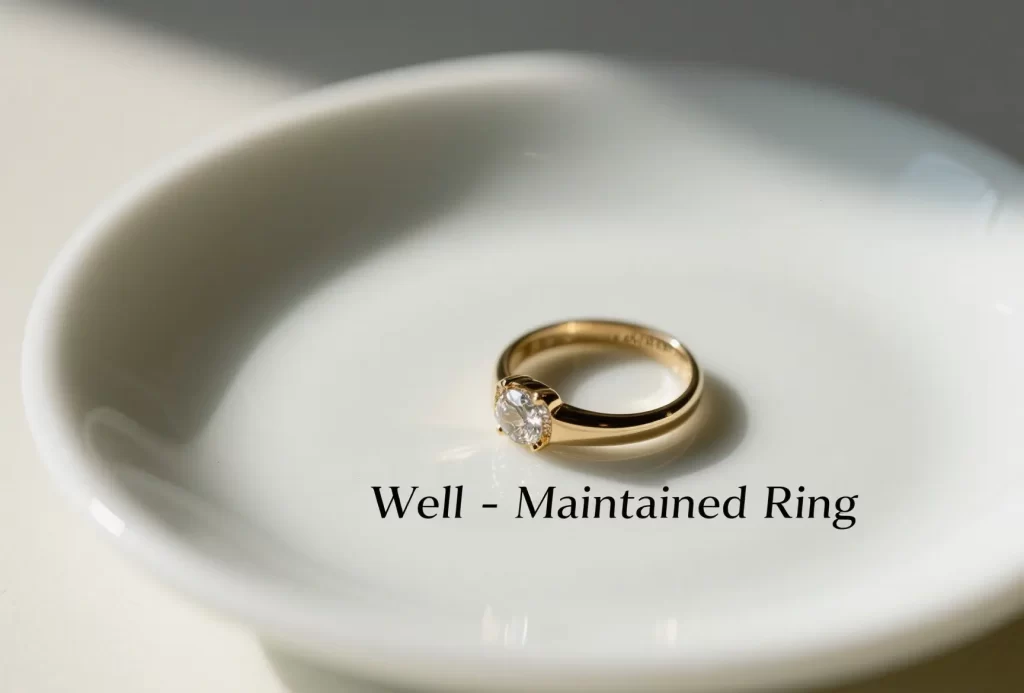
Gold prices fluctuate every day, if not by the hour. This is mainly due to global economic factors, including supply and demand, as well as inflation or changes in currency. High gold market = high value on your 14k gold ring.
When it falls, so does the ring’s worth. If selling your ring is on the horizon, it pays to keep an eye on gold price charts. Some sellers time their sales for peaks, while others sell because they need cash regardless.
When it comes to resale value, timing the sale can bring in—or cost—you thousands of dollars. Trustworthy resources such as the New York Mercantile Exchange (NYMEX) or sites such as Kitco display current gold prices in real-time.
Reviewing these items before selling will allow you to find the opportune time.
4. Gemstones: The Sparkle Factor
Most 14k gold rings have gemstones in them and these can add a lot of value. Diamonds, sapphires, emeralds, and rubies are the go-to gemstones. The worth of these gems is determined by their size, cut, clarity, and color.
Here, a ring with a half-carat diamond in a high polish setting sparkles with value. Conversely, a similar-weight plain gold band does not measure up. Quality of craftsmanship is just as important.
A properly set stone that sits stable and level increases the ring’s value. Conversely, stones that are missing or chipped will decrease the value. Lab-grown stones are less valuable than natural stones.
That said, branded cuts from designers such as Tiffany or Cartier increase the value by a premium.
5. Craftsmanship & Design: Artistry’s Price
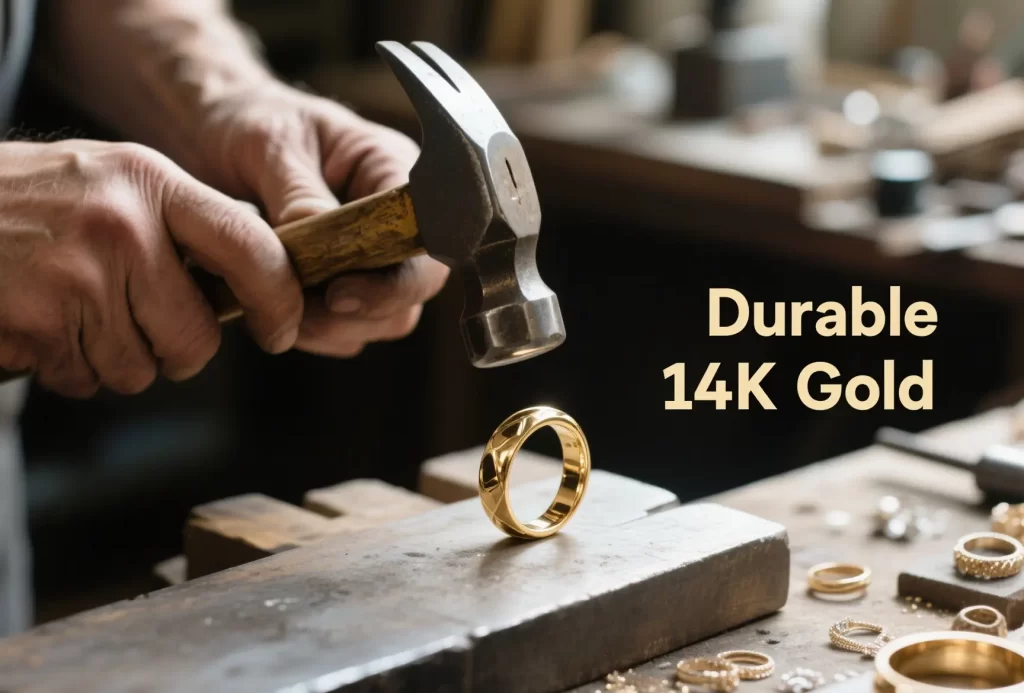
How a ring is crafted thus affects its appearance, but its worth. Mass-produced bands that aren’t as unique tend to be cheaper than custom made or artist designed rings. Detailed filigree work, hand-engraved designs, and custom styles all add to the cost.
Companies such as HonHo Jewelry Manufacturer in China have made their names on craftsmanship. They make custom waterproof, non-tarnish jewelry, gold vermeil, and gold-filled jewelry. These intricacies distinguish their work from other mass-produced jewelry.
Consumers are willing to shell out extra cash for rings that are visibly marked by the hands of skilled artisans. Even when the gold weight is the same, a ring with more intricate work stands out in the resale market.
When combined with unique patterns, the rock becomes even more desirable!
6. Brand Power: Does a Name Add Value?
When it comes to a ring’s brand, it can be a game-changer to the worth of your ring at resale and in general. Designer labels such as Cartier, Tiffany & Co. Or Van Cleef & Arpels command a premium for their name alone.
Even second-tier names can have an advantage. That’s because buyers know they can count on the quality, craftsmanship, and design that comes with established names. When reselling, having the original box, certificate, or receipt from these brands can help add provenance and increase the resale price.
Brand power, a long track record, and name recognition can translate to a premium when it comes time to resell and potentially a quicker sale, too.
7. Condition Counts: Wear, Tear, and Care
A piece’s condition is nearly as important an aspect as its style or metal. Scratches, dents, a wiggly stone, or signs of repair will all decrease value. A well-cared-for 14k gold ring will definitely be brighter and result in a higher offer.
At home, keeping your rings clean with soap and water, especially under the prongs, is key. Keep them in a fabric-lined box and stay away from harsh chemicals to preserve your rings!
If resale is in your future plans, minor repairs done by a certified jeweler can keep the ring in good shape and help retain value. Buyers always examine for signs of wear and tear, making the time spent keeping your jewelry in excellent condition well worth it.
8. Market Demand & Economic Winds
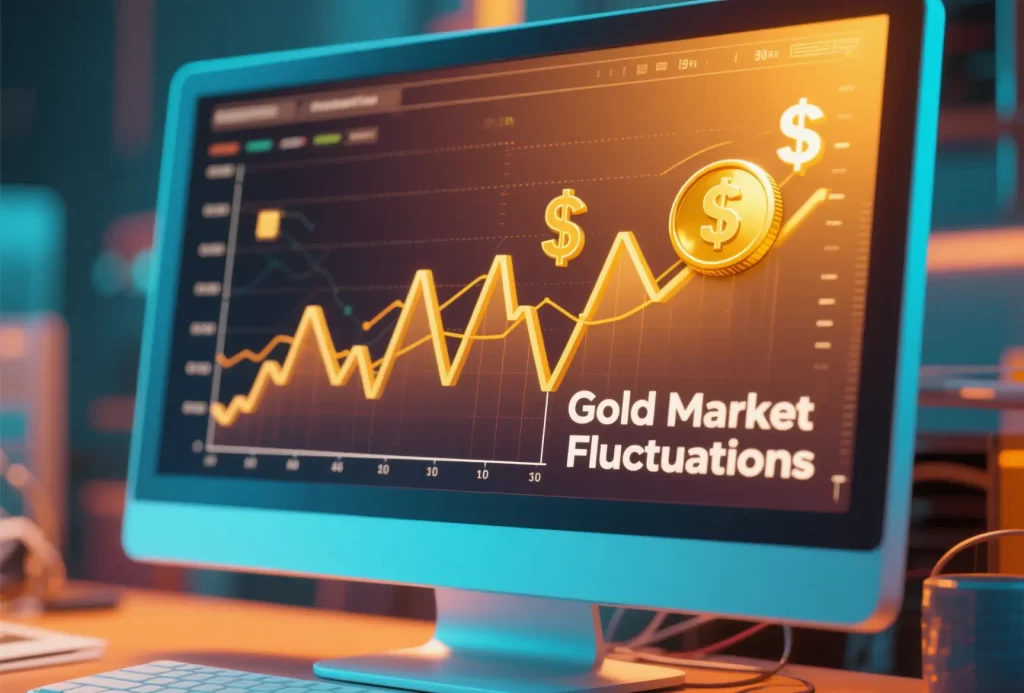
The global market heavily influences the demand for gold jewelry. Conversely, during times when the economy is booming, consumers tend to spend more on luxury items and gold ring prices increase.
In times of crisis, gold is typically viewed as a safe haven asset. Consequently, scrap value can increase, even when jewelry demand is on a downturn. Whether you’re buying or selling, staying in tune with these trends is beneficial to all parties involved in the transaction.
Find out what styles, brands, or gemstones are currently popular so you know what to buy or sell when the time comes.
9. Rarity & Uniqueness: Is It One-of-a-Kind?
As a general rule, unique or rare rings get the most attention on the market. Limited edition drops, bespoke creations, or vintage rings will command more interest. Collectors and enthusiasts search for rings that are more difficult to find, or that have a story to them.
A simple gold band will be more straightforward to appraise. A really cool custom design or vintage piece might pull in buyers ready to pay far in excess of simply the melt value!
When shopping, look for limited series or items whose provenance can be documented.
Evaluating Condition of the Ring
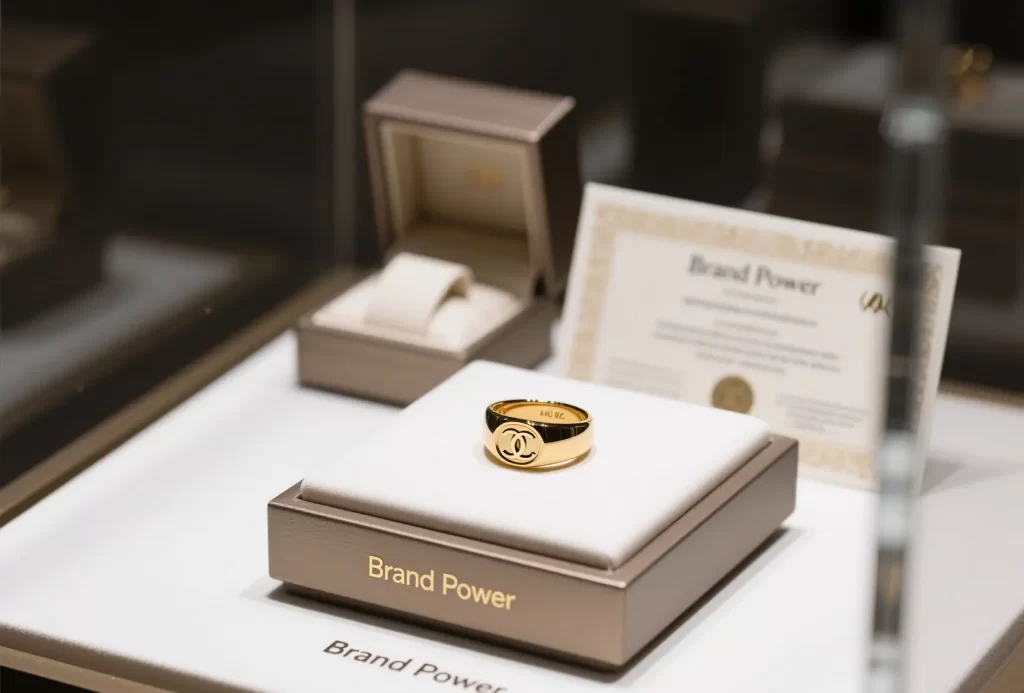
The condition of a ring greatly affects its value, just as much as the gold itself. Buyers look at wear, dents, and how well stones are set. Even small scratches can lower its price. A heavily worn ring with deep grooves will sell for less, while a nearly new ring can fetch a higher price.
Gold plating condition also matters; rings that are dull or worn typically sell for less, even if the gold content is the same. Missing stones or broken settings can further decrease value due to repair costs.
Additionally, age and style influence worth; antique or vintage rings may increase in value if the design is popular. In Los Angeles, rings that align with current trends or classic styles attract better bids. Minor imperfections like small scratches can be overlooked, but significant damage will lower the ring’s value.
Step-by-Step Price Calculation
To understand the value of a 14k gold ring, start by calculating its pure gold content. In the U.S., 14k gold is 58.3% pure, so a 10-gram ring contains about 5.83 grams of pure gold. Next, check the current market price of gold, which fluctuates daily. For example, if gold is $62 per gram, the gold in the ring is worth around $361.
This is the melt value, or what you’d get if you sold the gold after melting the ring. However, genuine rings also have added value from labor and design. Basic rings without stones typically sell for melt value, but designer or vintage pieces may fetch $100 to $300 more at local jewelry stores in Los Angeles.
If the ring has genuine stones, their market value must be considered. Where you sell the ring matters too; pawn shops usually pay near melt value, while jewelry stores or private buyers may offer more, especially for well-maintained pieces.
Calculate Your Ring’s Gold Value
Knowing what your 14k gold ring is worth comes down to three things: weight, gold price, and a bit of math. This ensures that you get an accurate and fair estimate. Whether you’re looking to sell or simply curious about your ring’s value, we’ll provide you with an accurate response!
While online gold calculators are a useful resource, knowing how the process works puts you in the driver’s seat.
Find Your Ring’s Weight Accurately
Find Your Ring’s Weight Properly. These little digital scales read in grams, which is the unit gold is measured by. Ensure your ring is devoid of dirt and any stones or non-gold features.
This means only gold impacts its melt value. For consistent results, always weigh at the same time of day, under the same conditions. A ring’s weight can vary somewhat depending on all these factors.
Check Today’s Gold Spot Price
Check Today’s Gold Spot Price. Now, check today’s gold spot price. You can see this at trusted financial news websites or with a simple internet search.
Since the spot price fluctuates throughout the day, using today’s most recent figure will ensure your estimate is as up to date as possible. U.S. Gold prices are always quoted on a price per troy ounce basis.
You’ll have to get the price per gram for your calculations. Consistent monitoring allows you to stay updated on market fluctuations and identify ideal selling opportunities.
The Simple Math for 14K Value
A typical 14k ring is 58.3% pure gold (14/24= .583). Multiply your ring’s weight by that percentage, then by today’s price per gram to get a rough estimate of the gold value.
For example, a 5g ring at $65 per gram: 5 x 0.583 x $65 ≈ $189. Whether you choose to do the math above or use an online gold calculator, you can get some quick answers.
Understanding Melt Value vs. Resale
Understanding Melt Value vs Resale. Melt value is what your gold would sell for as scrap. Resale value may be even more than melt if your ring is brand name, designer, or antique quality.
Making the Choice. Jewelers tend to pay you around close to melt value, but collectors will pay above melt value.
Beyond Bullion: Added Value Secrets
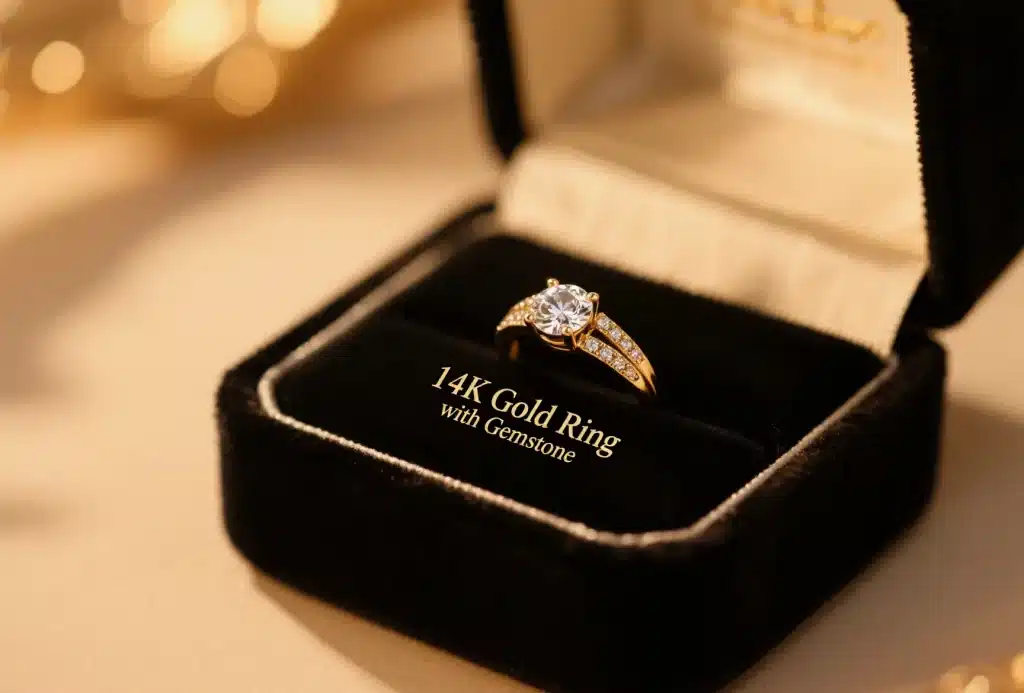
When evaluating a 14k gold ring for resale, its gold content provides a baseline from which to calculate value. Yet as we’ve seen in Los Angeles and in cities across the country, the true value goes far beneath the surface. Most rings carry added value from their age, craftsmanship or historical significance.
Through the resource, buyers and sellers can both get a much clearer understanding of what these pieces should be worth. They need to consider more than just melt price!
The Allure of Antique & Vintage
Rings that are vintage or antique can be worth a lot more than newer rings, even if the new ring has an equal amount of gold. Antique and vintage rings feature exquisite handwork and styles representative of different periods in history.
For instance, an Art Deco 1920’s ring can often fetch 10x more than a modern plain band. These one-of-a-kind works can make for exciting investments for collectors who appreciate history and unique pieces.
Designer Pieces: More Than Metal
Names can become brands, and brand names matter. Rings from big name designers such as Tiffany & Co. Or Cartier retain a premium resale value. These pieces display masterly craftsmanship and often uncommon examples of handwork, distinguishing them from industrially produced jewelry.
Taking a design to a custom shop—like the kind that HonHo Jewelry Manufacturer in Shenzhen, China, specializes in—can boost value, too. HonHo designs custom waterproof and non-tarnish pieces in gold vermeil, gold filled, brass, or 925 silver, showing how artistry and brand can add worth.
Sentimental Value: Priceless but Not Marketable
A diamond inherited from a beloved aunt might be priceless to its owner. Though this intrinsic meaning is non-marketable, it enriches the narrative.
Find out what the ring means to you! In addition, pay attention to its added value to others.
Engravings: Personal Touch, Varied Impact
An engraving of a custom message or date will make a ring more meaningful to the future owner. If the work is excellent, then buyers will be interested.
From an auction resale perspective, many buyers want a blank slate, so engravings can reduce resale value. Every situation varies greatly.
Smart Moves: Buying & Selling Gold
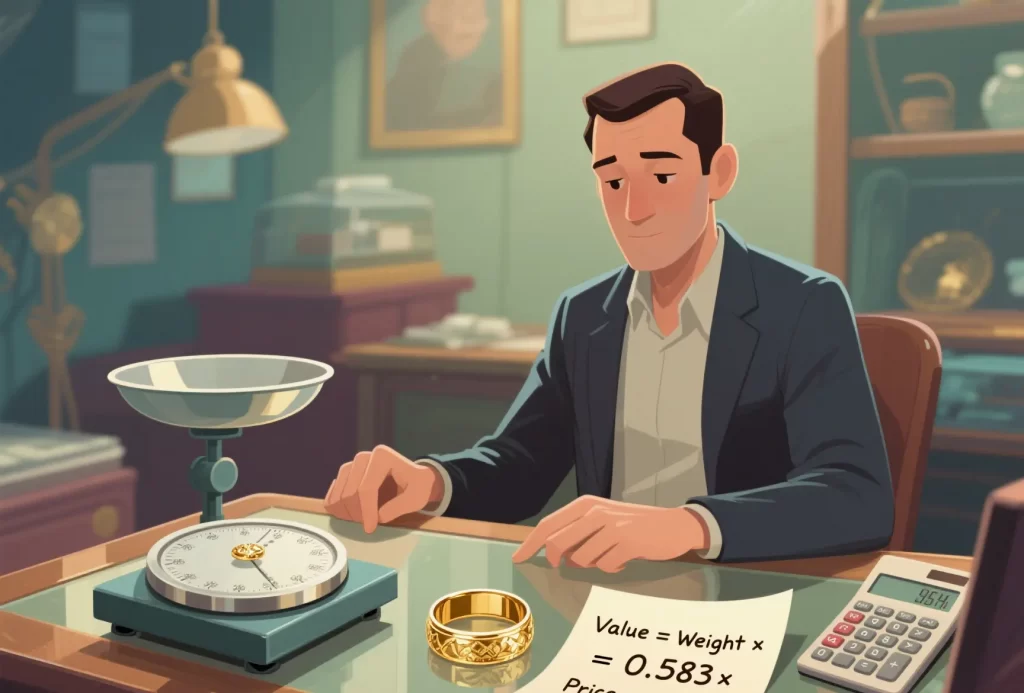
Whether buying or selling a 14k gold ring, the situation requires level-headed decision making. The gold market is very volatile. Being informed about gold purity, weight, and current market trends will better prepare you to make smarter buying/selling decisions.
For 14k gold, which is 58.3% pure, both purity and ring weight are significant when calculating value. These simple steps will save you the most money and keep you from making costly errors.
Get a Trustworthy Appraisal
A trustworthy appraisal provides an accurate, unbiased picture of your ring’s value. Professional appraisers take purity, weight, condition, and current gold price to determine fair market value.
An appraisal will help detect added value if your ring is unusual or has a unique design. Choose appraisers with solid reviews or industry support to avoid any unfair practices.
Differentiate Intrinsic vs. Collectible Value
Intrinsic value is strictly from gold content—which is 58.3% for 14k gold. Collectible value may be determined by name brand, style, or scarcity.
A ring made by a famous designer or in a distinctive style could sell for more than gold value alone. It’s important to be aware of both values before selling or buying.
Know Where to Sell for Best Price
Where you sell gold is important. Pawn shops usually provide quick cash on hand, but they will offer a lower payout.
Online gold buyers or auction sites, like eBay, provide broader access to potential buyers, but require additional research. Get bids from local jewelers, online companies, and private buyers.
Online calculators to convert gold price per gram to price per ounce will give you an idea if an offer is reasonable.
Steer Clear of Common Scams
Watch out for scams—phony appraisals, lowball offers, or buyers who refuse to present credentials. Take the time to verify who you’re working with.
Always get offers in writing and be willing to walk away if something doesn’t feel right.
Understand Regional Price Nuances
Gold prices can vary significantly by region and even state. For instance, in the U.S., prices can vary from New York City to Los Angeles and even to other, smaller cities.
Local demand, taxes, and/or dealer fees can further shape the payout you actually receive. Take a look at nearby areas’ trends before you do.
HonHo Jewelry Manufacturer Factory from China creates custom, non-tarnish, waterproof gold jewelry. They provide honest value and real information whether buying or selling gold!
How Much For 14K Gold Ring – Conclusion

If you want to get an accurate idea of what a 14k gold ring is worth, consider the value of more than the gold. We know that gold price moves quickly in the U.S. Market, but items such as style, brand, or gems might tack on hundreds. Other rings have family significance or display local craftsmanship that consumers are willing to pay a premium for. This style might merit a premium from gold buyers in Los Angeles or New York.
On the flip-side, pawn shops located in more rural areas are likely to pay less. Follow these steps to ensure you get a fair deal, monitor gold prices, weigh your 14k gold ring and solicit offers from multiple retailers. Negotiate with jewelers or consult online estimates first to minimize loss when you sell or buy. After all that you have still got questions or want advice on your ring. Leave a comment below or contact us to learn more.
Frequently Asked Questions
How much pure gold is in a 14K gold ring?
How much gold purity is in a 14K gold ring? The balance consists of other alloy metals, which provide durability as well as different hues of gold, enhancing its overall value.
How do I find out my 14K gold ring’s value?
Get the ring’s weight in grams and determine the current market price for 14k gold. Simply multiply the weight first by 0.583, then by the gold price to calculate the overall value.
Does the design or brand affect a 14K gold ring’s value?
Yes. Specific designer names, elaborate settings, and rare gemstones can all significantly enhance a 14K gold ring’s overall value beyond the current market price.
Where can I sell a 14K gold ring in Los Angeles?
Sell your gold items to reputable local jewelers or trusted online gold buyers for the best current market price.
Is a 14K gold ring worth more than a 10K gold ring?
Yes. Since a 14K gold ring contains more gold purity levels than a 10K ring, it would have a higher overall value by weight.
What impacts the resale price of a 14K gold ring?
The condition, gem quality, brand, craftsmanship, and current market price of gold jewelry are all taken into consideration when determining resale value, especially for rings featuring gemstones that significantly enhance their overall value.
Should I get my 14K gold ring appraised before selling?
Having your ring appraised not only provides you with a fair market value, but it also ensures you understand the gold purity levels to receive the best price possible when selling.
Related Posts
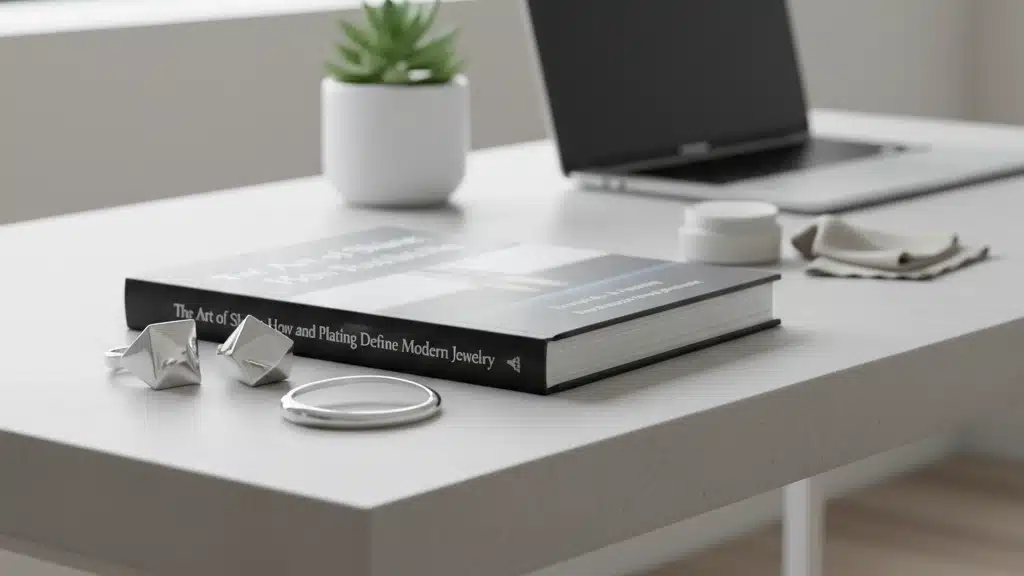
Understanding Wholesale Jewelry Pricing and How It Works
Understanding Wholesale Jewelry Pricing and How It Works When people see a ring that costs $6 wholesale and retails for $59, they often

The Art of Shine in Jewelry Polishing and Plating Techniques
Discover how polishing and plating transform modern jewelry with expert techniques for lasting shine and elegant finishes.
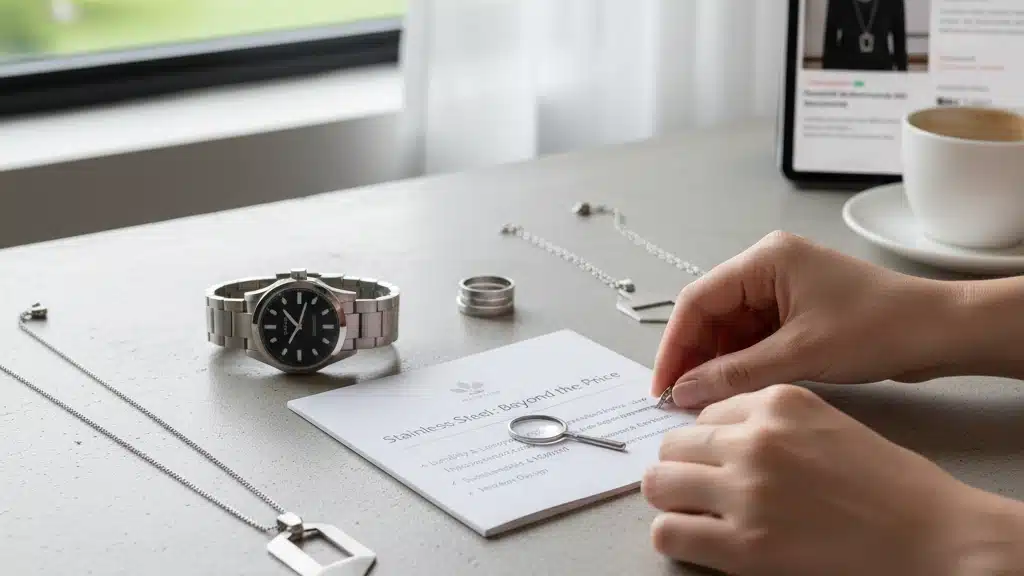
Τι Νοιάζει Πραγματικά τους Αγοραστές Ανοξείδωτου Κοσμήματος Εκτός από την Τιμή
Τι πραγματικά νοιάζει τους αγοραστές ατσάλινων κοσμημάτων πέρα από την τιμή ανθεκτικότητα υποαλλεργικά υλικά και μοντέρνο στυλ.
